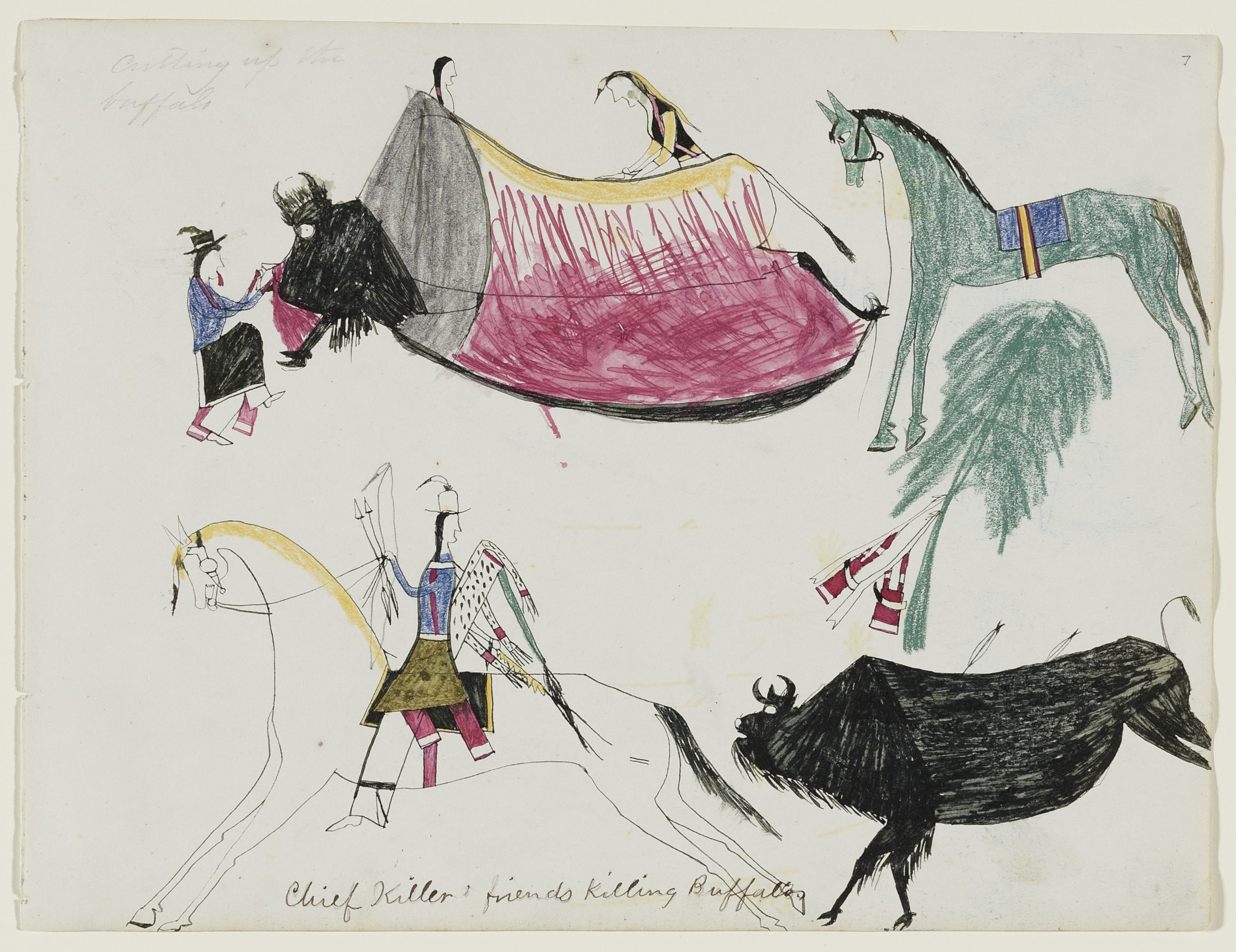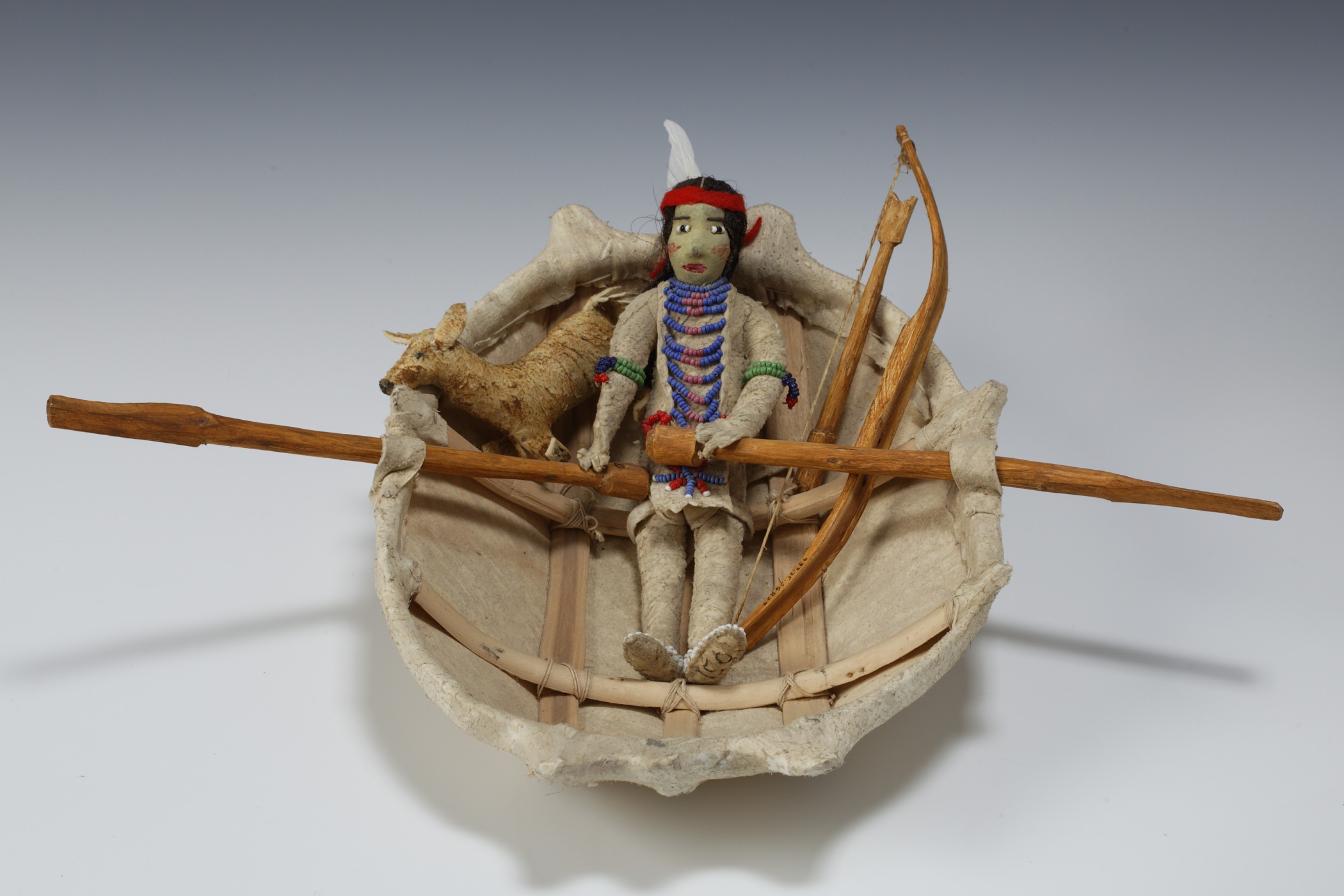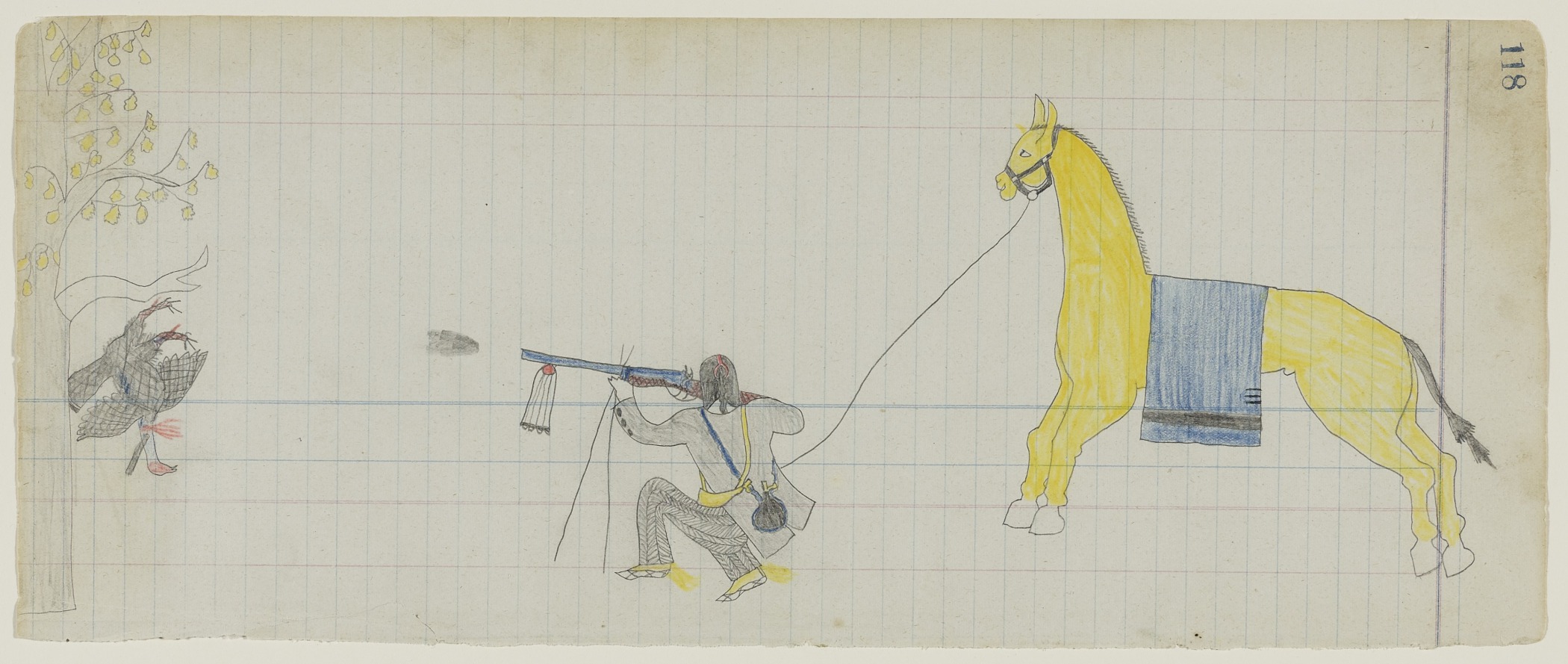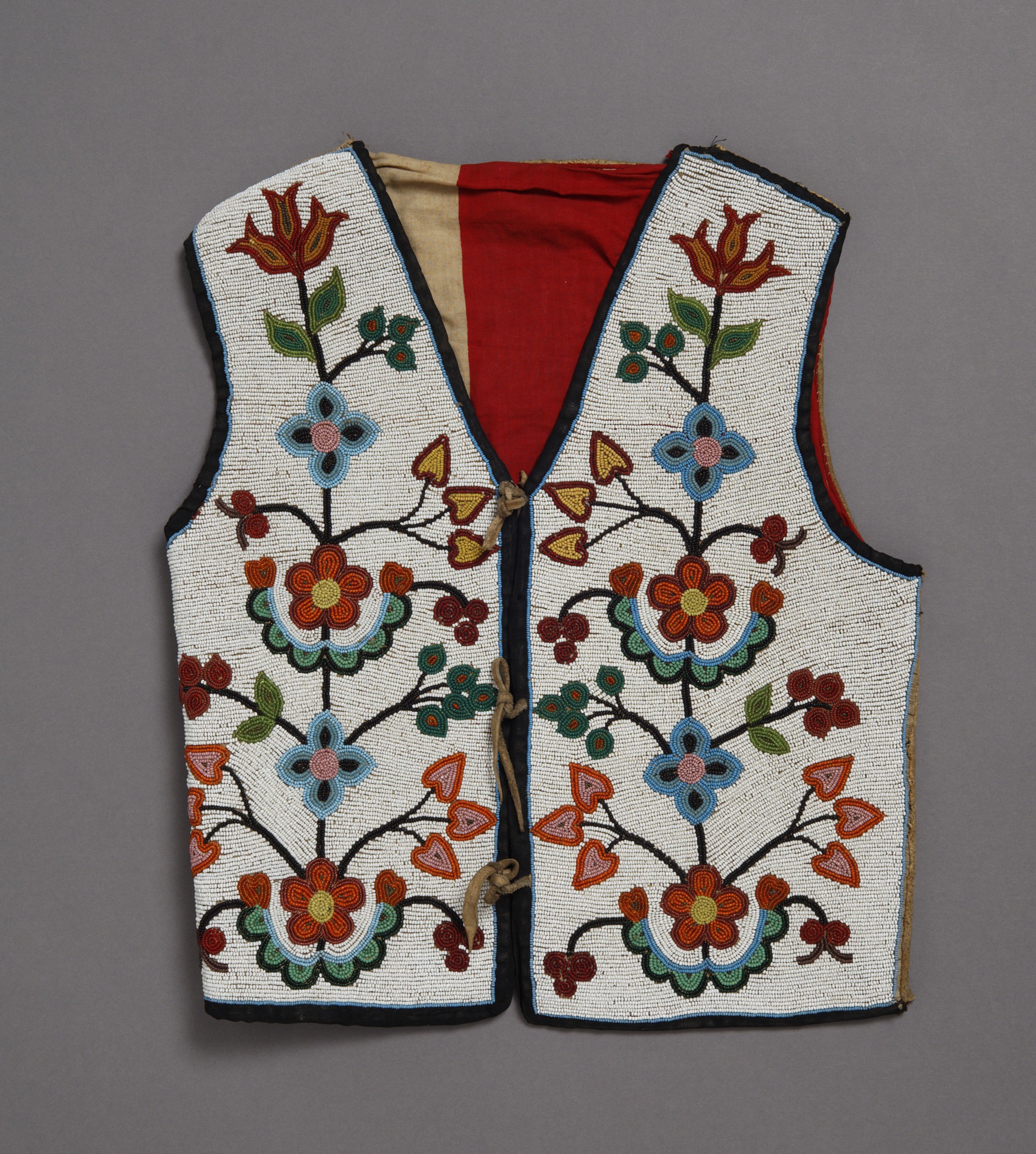Chief Killer (Noh-hu-nah-wih), American (Southern Tsistsistas [Cheyenne]), 1849–1922
Untitled (Chief Killer and Friends Killing Buffalos [sic]), page 7 from a Chief Killer sketchbook
- About mid-1875–mid-1878
- Colored pencil, crayon, graphite, and ink on wove sketchbook paper
- 8 9/16 × 11 1/4 in.
Hood Museum of Art, Dartmouth College: Mark Lansburgh Ledger Drawing Collection, Purchased through the Mrs. Harvey P. Hood W’18 Fund; 2008.70.2
visibilityLook & DiscussThis drawing from the mid-1870s shows two scenes from a buffalo (or bison) hunt. It was drawn from memory by a Cheyenne hunter/warrior.
explore the object
Hunting buffalo is a dangerous undertaking, as shown in this drawing. Chief Killer has depicted two different phases of the hunt, shown in the upper and lower sections of the page.
In the lower section, the hunter has shot a couple of arrows into the buffalo, but the buffalo has turned and is now pursuing the hunter.
In the upper portion of the page, the hunters have successfully harvested the buffalo, and two men are processing the animal for transportation back to the community. In this image, the dead buffalo lies on its belly. Traditionally, the hide is cut along the spine and the skin is folded down, as shown here. A horse waits near a tree where the hunters have hung their sashes and powder horns.
Most parts of the buffalo were used to supply the needs of the community. Plains Indians enjoyed buffalo liver raw. They ate the rest of the animal cooked or dried and mixed with berries. Dried buffalo is called pemmican; it provided food to eat through the winter. Buffalo bones provided marrow for soups. Buffalo hide could be used to make tipis, clothes, moccasins, bedding, containers, and saddle covers. Dried buffalo dung provided fuel for fires. Plains artisans made buffalo horns and hooves into cups, and used buffalo sinew as bowstrings and thread. They used buffalo fat as soap.
learn more
Explore the relationship between Plains cultures, the buffalo, and American settlers through a contemporary buffalo hide painting. Visit the interactive site created by the National Museum of American History.




